As the Hajj—the annual pilgrimage to Mecca—kicked off last week, so too did the most recent exchange of Saudi-Iranian diatribes. Earlier in the year, Tehran and Riyadh failed to agree on arrangements for Iranian pilgrims to participate in the annual rite, which Muslims are expected to take at least once in their lifetimes if they are able, and Iranian leaders banned their citizens from taking part.
The latest volley came last week, when in a speech commemorating last year’s deadly Hajj stampede, Iran’s supreme leader, Ayatollah Ali Khamenei, called Saudi rulers “heartless and murderous” and implored the “world of Islam” to “fundamentally reconsider the management of the two holy places [Mecca and Medina] and the issue of [H]ajj.” In response, Saudi Grand Mufti Abdul Aziz al-Sheikh told a Mecca newspaper: “We must understand these are not Muslims.”
The religious event has seen its share of controversies and violence. While the most recent remarks only add to the tensions between Saudi Arabia and Iran, the hostility is hardly unprecedented. In fact, a strikingly similar series of events took place fewer than 30 years ago.
Pointing fingers
Mecca, Islam’s holiest city, has often been a flashpoint between Sunni-majority Saudi Arabia and Iran, whose population is predominantly Shiite. Differences over sect-specific rituals at the Hajj have manifested for many centuries, and became a routine source of friction nearly a century ago. That was when the Al Saud family established the modern-day kingdom in the Arabian Peninsula, in alliance with clerics who were adherents of what Brookings Senior Fellow Bruce Riedel has described as a “puritanical and sectarian version of Islam that called for a return to literal fundamentalism and an intolerance of any deviation from their hard line views on what constituted the original faith of the Prophet Muhammad.”
Sectarian tensions between the two countries were magnified by the 1979 Iranian Revolution, and they have often manifested around the Hajj. In 1979, the Grand Mosque in Mecca was attacked by several hundred extremists. The next day, a New York Times headline read “Mecca Mosque Seized by Gunmen Believed to Be Militants From Iran.” Although it was soon established that Iran was not involved, the immediate assumption—among Westerners, Saudis, and others in the Arab world—portended a bitterly hostile relationship.
From the start, the leaders of revolutionary Iran have utilized religious rituals as an opportunity for political mobilization, and as the standard-bearer of Shiite Islam they saw the Hajj as an occasion to challenge the primacy of the Saudis among the broader Muslim community. Over the years, Iranian pilgrims have attempted to distribute revolutionary literature and display the Supreme Leader’s portrait at pilgrimage sites; they have also emphasized specific Shiite rites and pilgrimage sites over the objections of the Saudis. For their part, Saudi authorities have detained and deported Iranians for threatening security and distributing propaganda; and Saudi and Iranian accounts of these episodes tended to portray the other as the wrongdoer.
Take one: 1987 to 1991
Until recently, the most notorious incident occurred in 1987. Saudi Arabia’s King Fahd banned political demonstrations during the Hajj, warning the previous month that Riyadh would not tolerate the actions of “hypocrites and pretenders…if their real intention is to stage demonstrations and angry marches and to chant well-known slogans which spread an atmosphere of chaos and upset the peace.” Nonetheless, encouraged by Iran’s Supreme Leader Ayatollah Ruhollah Khomeini, thousands of Iranian pilgrims held demonstrations near the Grand Mosque, sparking the clashes. More than 400 pilgrims—more than half of them Iranian—were killed in clashes with Saudi authorities.
Almost immediately, Iranians sacked the Saudi and Kuwaiti embassies in Tehran, killing one Saudi diplomat. After escalating exchanges of blame, Riyadh severed diplomatic ties with Tehran in the spring of 1988. A week later, Saudi Arabia rejected an OPEC plan to cut oil production and raise prices. It also reduced the number of visas to would-be pilgrims from Iran. In response, Iran boycotted the Hajj, and from 1988 to 1990 Iranians did not participate in the pilgrimage to Mecca.
In 1991, under Iranian president Akbar Hashemi Rafsanjani, who sought improved relations with Iran’s Gulf neighbors, the two countries restored ties. Even so, since then there have been several Saudi-Iranian confrontations over the Hajj. The most significant took place last year, and the aftermath resembles that of the 1987 clashes.
Take two: 2015 to present
In September 2015, a stampede in Mina—about three miles from Mecca—killed many pilgrims: roughly 700 according to Saudi Arabia, and more than 2000 according to the Associated Press. The number of Iranians killed was initially estimated to be below 200, but Iran maintains that the number was 464.
When Saudi Arabia executed prominent Shiite cleric Sheikh Nimr al-Nimr this January, Iranian protestors again stormed the Saudi embassy. The following day, Riyadh severed diplomatic ties with Tehran. Since then and on two occasions (April and June), OPEC has been unable to reach an agreement cutting oil production and boosting prices, largely due to the obstructionism of Saudi Arabia and Iran.
After negotiations involving transportation and visa complications failed to produce an agreement on Iranian participation in the Hajj, Tehran announced in May that Iranians will not be among this year’s pilgrims. The public positioning of both governments is reminiscent of the 1987 dispute; Saudi Foreign Minister Adel al-Jubeir said that Iran sought to hold “protests” during the Hajj, while Iran claims that Saudi Arabia has not guaranteed the safety of Iranian pilgrims.
In both episodes, the escalation took place against a backdrop of an extraordinary regional upheaval that pitted the two countries against one another: the Iran-Iraq War in the 1980s, and the Syrian civil war today.
The Brookings Institution is committed to quality, independence, and impact.
We are supported by a diverse array of funders. In line with our values and policies, each Brookings publication represents the sole views of its author(s).
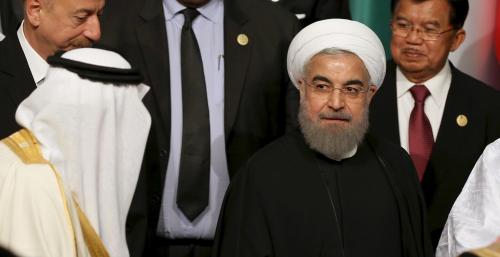
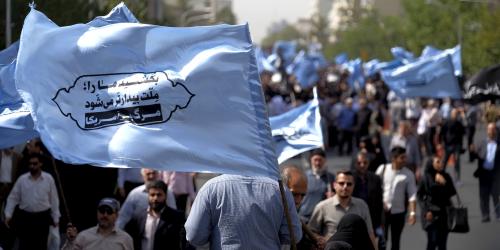
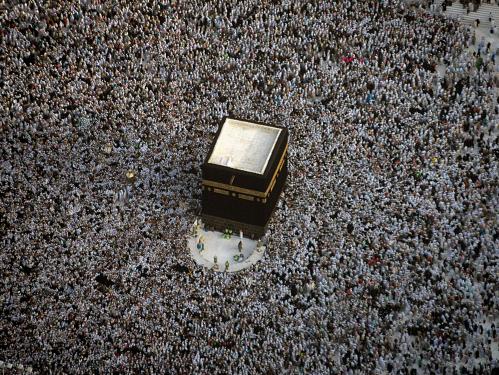
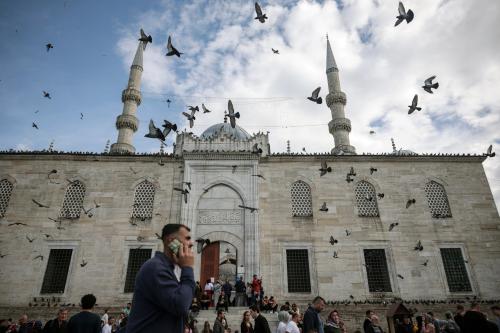
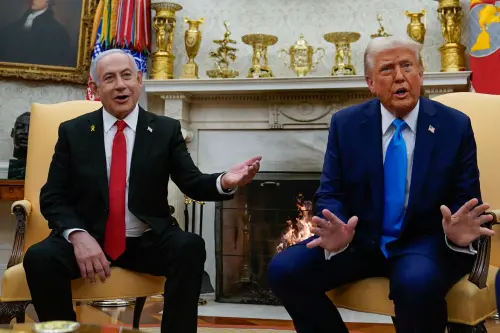
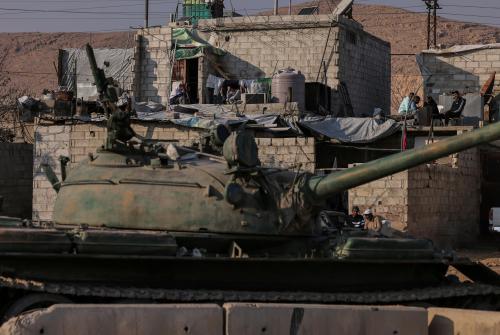
Commentary
Groundhog Day in Mecca: Another year, another escalation of Saudi-Iranian tensions
September 12, 2016